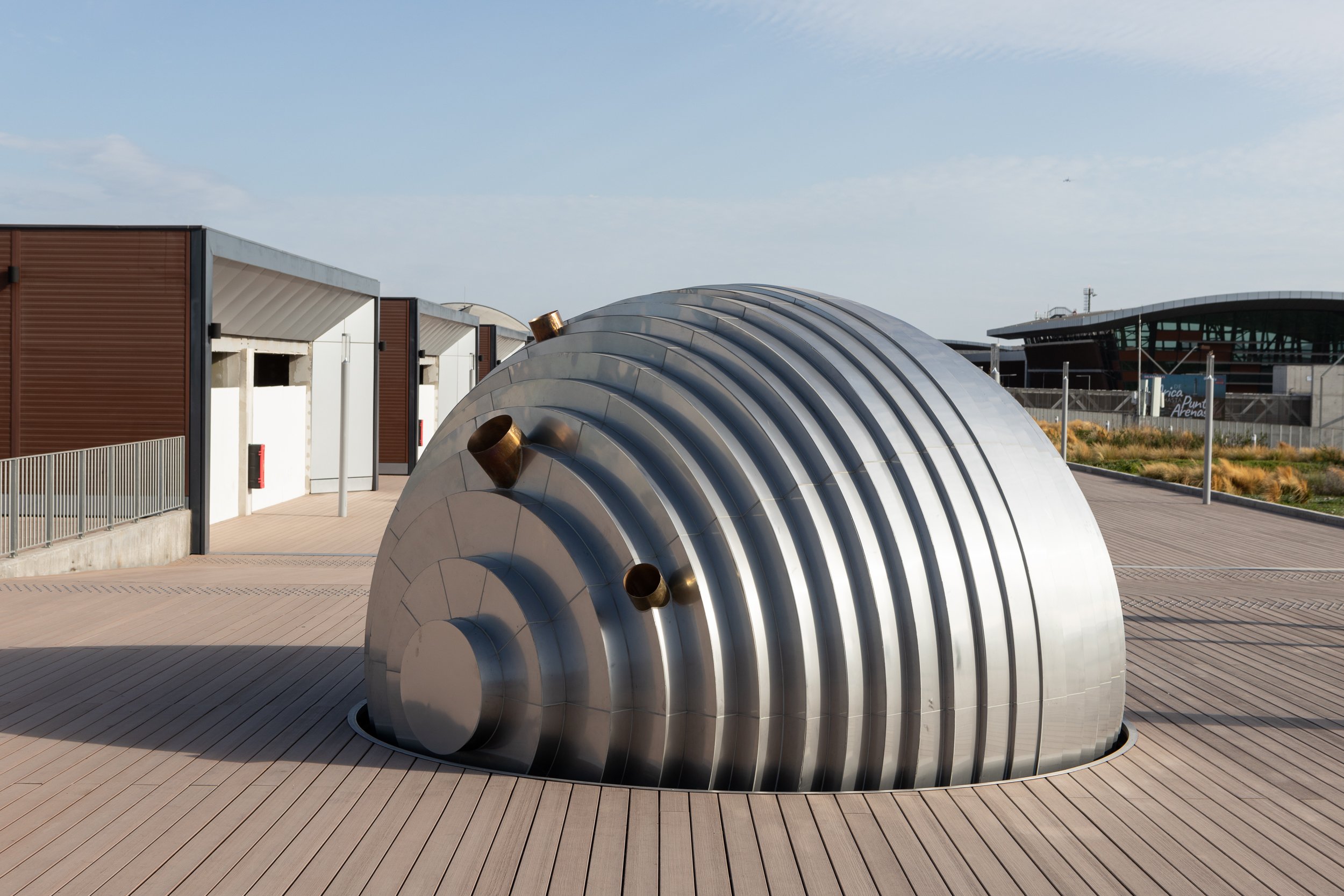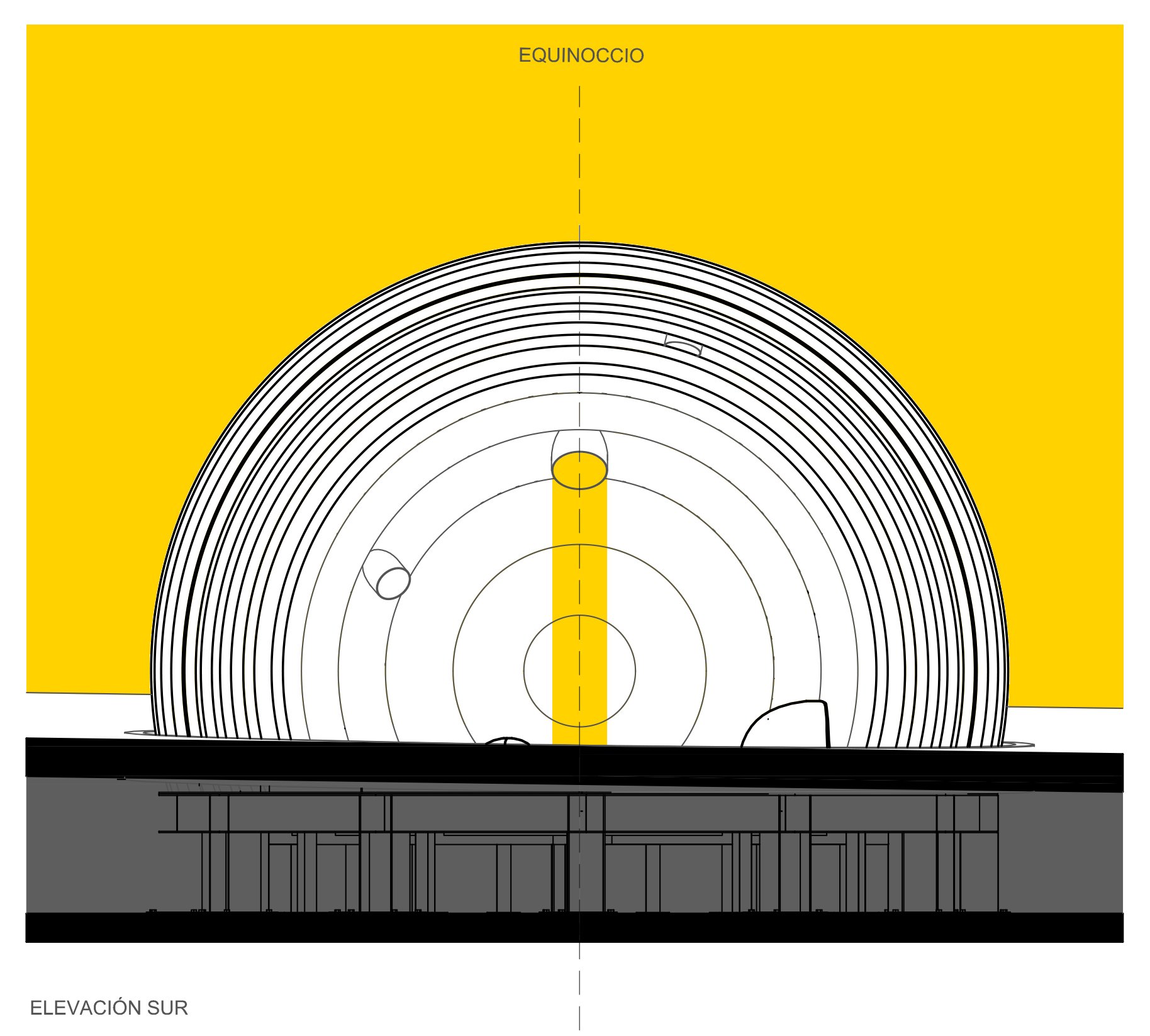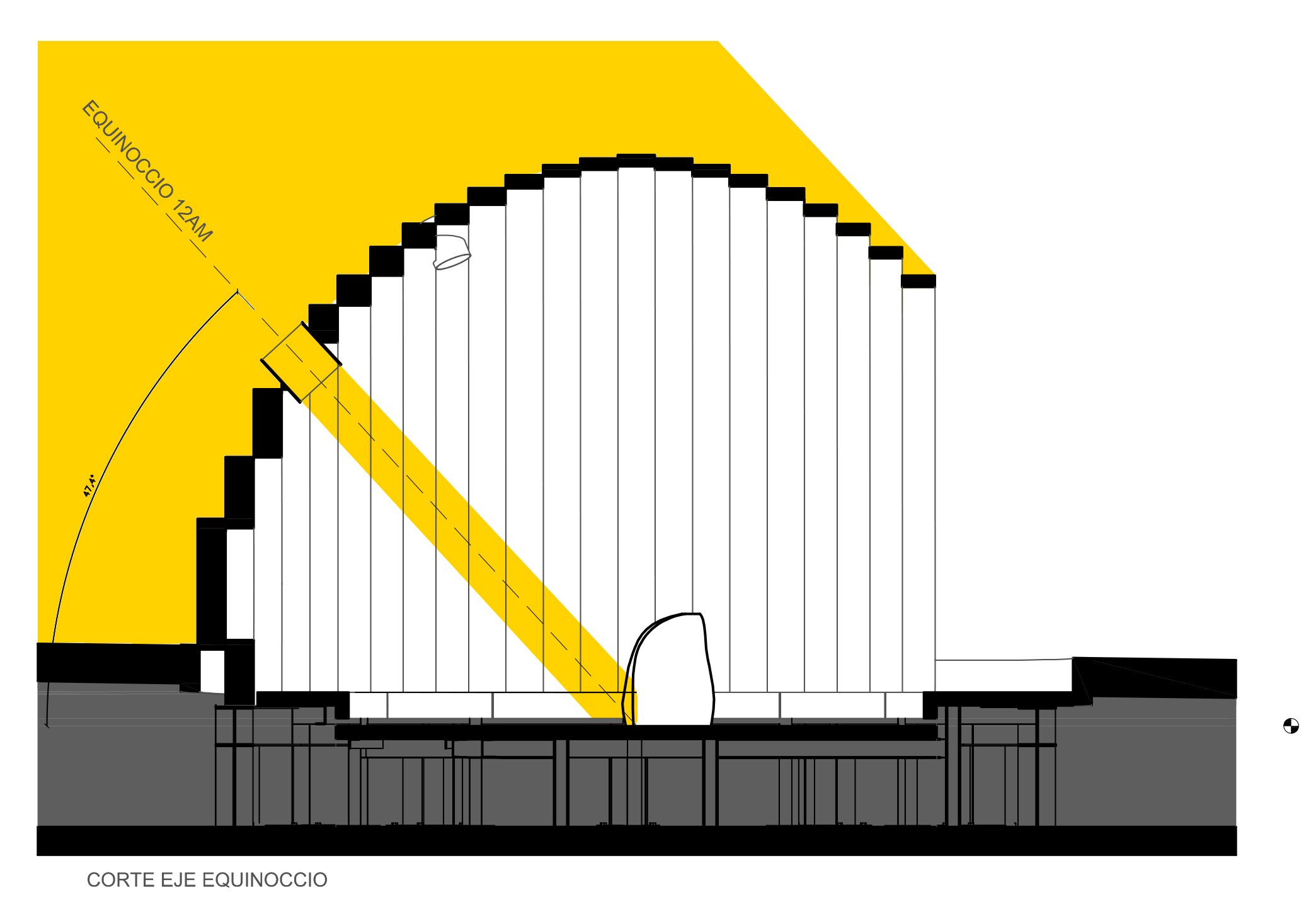Observatory
West Boulevard, Arturo Merino Benítez Airport, Santiago -2023
Public Sculpture
project executed with Häc Architecture
Observatory is presented as a public sculpture of natural dynamics that invites the passerby to stop, observe and reflect on our place in the universe and its evolution over time.
The installation consists of a dome 4.88 meters in diameter and 2.70 m high (at the highest point of the sphere) structured by steel arches, which function as beams. The arches, joined and overlapping, reduce their size in a scaled manner to form a closed hemisphere with a single entrance and exit.
This piece houses an interior space that invites the visitor to sit, rest, observe and reflect. This interior place, typical of the sculpture, in addition to partially isolating outside noise, provides shade throughout the day.
In the metal cover there are three perforations of different dimensions, covered with bronze tubes arranged in the upper section of the dome. These perforations are oriented to the winter and summer solstices (June 21 and December 21), and the spring and autumn equinoxes (September 21 and March 21).
The interior of the beams that make up the structure is specially treated in order to reduce the temperature inside the dome. The first five arches are separated from each other in order to provide cross ventilation to the interior of the sphere.







Through the perforations, the rays of sunlight enter the dome, settling on two stones extracted from the mountain range in the central area, arranged on the ground, marking with their wedge the winter and summer solstices.
The floor of the dome is made of black concrete, emphasizing an atmosphere of connection with stellar phenomena. Here, in addition to the two stones, there is a central bronze circle, which is related to the helium particle. This circle will be illuminated with a beam of light during the equinoxes, and will accompany the solstices in its fit. During each solstice, one of the two stones will also be illuminated with a beam of light, depending on winter or summer. In this way, the winter solstice will be marked by the sunprint on the central bronze circle and stone No. 1, the summer solstice will be marked by the sunprint on the central bronze circle and stone No. 2. The autumn and spring equinoxes will be marked by the solar footprint on the central bronze.
In this way, when the ray of light falls on your specific stone in a perfect fit, it indicates that we are at the winter solstice, summer solstice or spring and/or autumn equinoxes. By observing the lights cast by the sun, we can relate to the movements of our planet within the solar system.
Chile is an astronomical country due to its unique, internationally recognized conditions, which have given rise to astral observation projects in which Chile opens a window onto the universe. This universe that we recognize as the next horizon to be reached is far from us on a daily basis, as much as the place we occupy in it. We can observe the sunset every day, but we have little awareness of the orbits that govern our interaction with it and their changes over time.
The possibility of making this visible in a simple and interactive way opens up a dynamic and interactive space with the main star of our system, thus reminding us that we are part of a group of planets in continuous orbit.
UC Arts Faculty: Observaatory from academic Claudia Müller Montes















